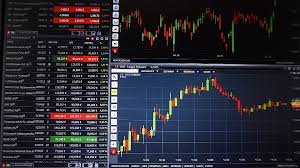
Mastering the Forex Market: Strategies for Success
If you’re interested in Forex trading, you’ve probably already realized that it’s a complex and dynamic environment. To navigate these waters successfully, having solid trading strategies in place is essential. In this article, we’ll explore various forex trading strategies, providing a comprehensive overview to help you craft your own effective approach. For traders looking for reputable resources, you might want to check out forex trading strategies pdf Trading Brokers in Morocco, which offers insights into the local trading landscape.
Understanding Forex Trading
The foreign exchange (Forex) market is where currencies are traded. It’s one of the largest financial markets globally, with a daily trading volume exceeding $6 trillion. The essence of Forex trading lies in predicting currency fluctuations. Successful traders analyze various factors to forecast price movements and make informed trading decisions:
- Economic Indicators
- Political Stability
- Market Sentiment
- Technical Analysis
The Importance of Trading Strategies
Trading strategies are essential tools that help traders make informed decisions rather than relying on intuition. A well-defined strategy can help manage risks, maximize profits, and maintain discipline in the tumultuous trading environment. Here are some popular strategies used by successful Forex traders:
1. Scalping
Scalping involves making numerous trades throughout the day to capture small price movements. Scalpers typically hold positions for a few seconds to a couple of minutes and aim for small profits on each trade. This strategy requires a reliable broker, low spreads, and high trading volumes.
2. Day Trading
Similar to scalping, day trading involves opening and closing trades within the same day. Day traders focus on intraday price movement and utilize technical analysis to identify potential opportunities. The goal is to benefit from short-term market fluctuations while avoiding overnight risks.
3. Swing Trading
Swing trading involves holding positions over several days to capture larger price movements. This strategy is more relaxed than day trading, allowing traders to take advantage of trends over a longer period. Swing traders often rely on technical indicators to identify entry and exit points.
4. Position Trading

Position trading is a long-term strategy where traders hold positions for weeks, months, or even years. It is based on fundamental analysis, considering economic data and market trends rather than short-term price fluctuations. This strategy requires patience and a deep understanding of the market.
Crafting Your Trading Strategy
When developing your forex trading strategy, consider the following steps:
- Define Your Goals: Understand your risk tolerance and profit targets.
- Choose Your Strategy: Select a trading strategy that aligns with your goals and lifestyle.
- Plan Your Trades: Create a trading plan that outlines entry and exit points, risk management rules, and position sizing.
- Backtest Your Strategy: Test your strategy with historical data to evaluate its effectiveness.
- Keep Learning: The forex market is constantly evolving. Continuously educate yourself about new strategies and market conditions.
Risk Management in Forex Trading
No matter how effective your trading strategy is, risk management is critical to long-term success in Forex trading. Here are some key principles of risk management:
- Use Stop Losses: Always set a stop loss order to minimize potential losses.
- Position Sizing: Determine how much of your capital to risk on each trade based on your account size and risk tolerance.
- Diversify Your Trades: Avoid putting all your capital into one trade or asset. Diversification can help reduce overall risk.
- Avoid Emotional Trading: Stick to your trading plan and avoid making impulsive decisions based on emotions.
Utilizing Technical Analysis
Technical analysis is a critical component of most trading strategies. Traders utilize charts and technical indicators to analyze price movements and identify potential trends. Here are a few common tools:
- Moving Averages: Moving averages help smooth out price action and identify trends.
- Relative Strength Index (RSI): This indicator measures market momentum and helps identify overbought or oversold conditions.
- Bollinger Bands: Bollinger Bands indicate volatility and potential reversal points within an asset’s price movement.
Resources for Forex Traders
Successful trading requires access to industry knowledge and financial tools. Here are some resources that can assist you:
- Online Trading Courses
- Forex Trading Forums
- Market Analysis Websites
- Trading Simulation Software
Conclusion
The world of Forex trading is both challenging and rewarding. By leveraging effective trading strategies, understanding the importance of risk management, and utilizing technical analysis, traders can navigate the market with a greater chance of success. Remember, continuous learning and adaptation are key to thriving in the ever-changing landscape of Forex trading. Start crafting your own strategies today, and take the next step in your trading journey!
